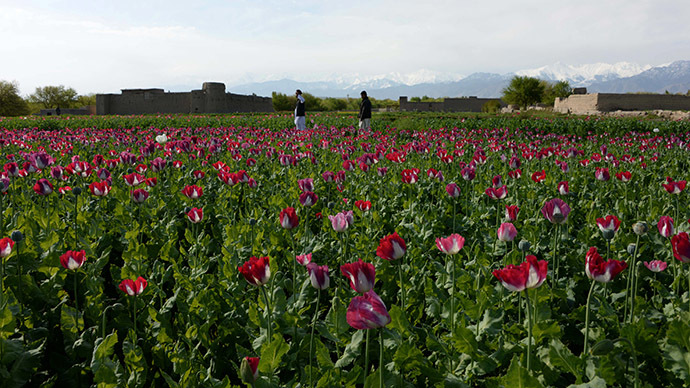CDC: Heroin-linked deaths jumped by 39 percent in one year

The Centers for Disease Control and Prevention (CDC) said that 2,000 more people died from heroin-related deaths in 2013 than in 2012, as prescription painkillers became harder to obtain and led to a rise in cheaper, illicit street drugs.
Data released by the CDC on Monday shows that heroin-related deaths surged from 5,925 in 2012 to 8,257 in 2013 – an increase of 39 percent. Overall, deaths from drug overdoses increased to 43,982 from 41,340 during the same period. The rise has been attributed to changes in laws over prescription opioids, causing many painkiller users to look for other options.
"These troubling statistics illustrate a grim reality: that drug, and particularly opioid abuse, represents a growing public health crisis," Attorney General Eric Holder said in a statement.
The National Survey on Drug Use and Health found that the number of people who had used heroin rose from 2012 to 2013.
READ MORE:Record opium poppy cultivation has 5% of Afghan pop. using heroin
Laws concerning prescription opioids were enacted in response to fatal poisonings and emergency room visits, which more than doubled to 300,000 nationwide between 2004 and 2008. The rules mandated that primary care doctors consult with board-certified pain specialists before prescribing daily morphine-equivalent doses of 120mg or greater, and marked the first dosage threshold of its kind in the United States.

One of the recent solutions to the rise in overdose deaths has been to have local police carry naloxone, a drug that can reverse opioid overdoses. The World Health Organization estimated earlier this month that naloxone could save as many as 20,000 lives every year. States like New York and Maine have also increased the number of law enforcement agents tasked with drug enforcement while they have expanded naloxone access.
Advocate groups for community based programs, such as the Drug Policy Alliance, applaud the increased distribution of naloxone to police, but also hope community groups are included.
"Community-based naloxone distribution programs continue to struggle mightily to be able to afford to do this lifesaving work, while police departments have access to a much larger pot of money," Meghan Ralston, harm-reduction manager for the Drug Policy Alliance, told the Huffington Post.
READ MORE:4yo girl shares packets of heroin at daycare thinking it's candy, mom arrested












